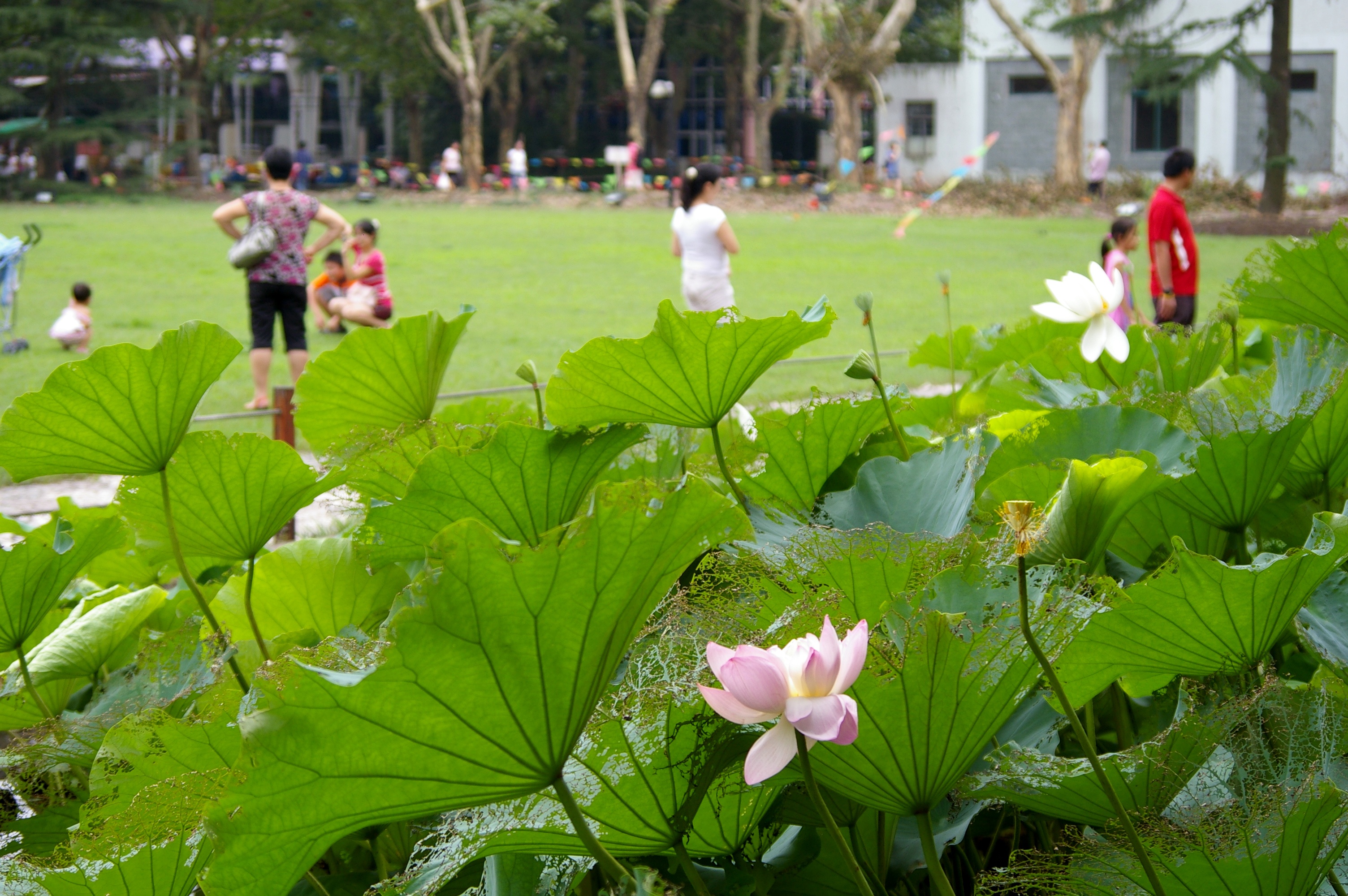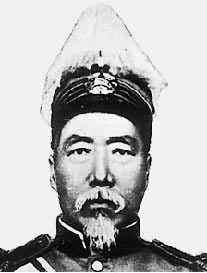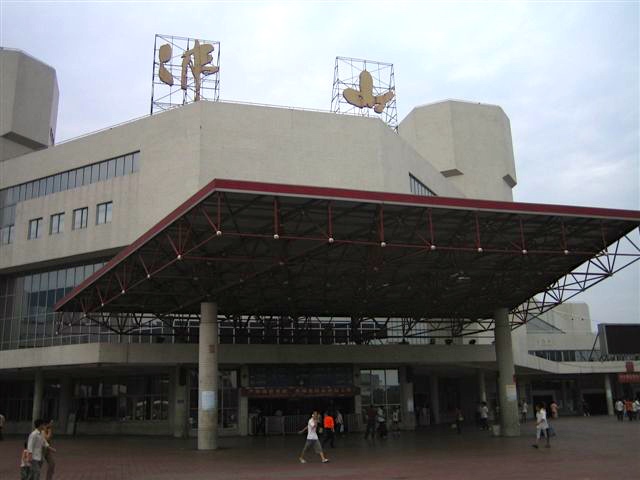|
Zhongshan Park
Zhongshan Park () is a common name for Chinese parks, in honour of Sun Yat-sen, better-known in Chinese as Sun Zhongshan, who is considered by many to be the " Father of modern China". Currently there are more than 40 Zhongshan Parks in China, and some in overseas areas. List of Zhongshan Parks * People's Republic of China ** Nanjing Zhongshan Park, Nanjing, containing the Sun Yat-sen Mausoleum. ** Zhongshan Sun Wen Memorial Park, Zhongshan (Sun Yat-sen's birthplace, later renamed after him) ** Beijing Zhongshan Park, Beijing ** Shanghai Zhongshan Park, Shanghai ** Shenyang Zhongshan Park, Shenyang ** Jinan Zhongshan Park, Jinan ** Memorial Park of Dr. Sun Yat Sen, Macau ** Ningbo Zhongshan Park, Ningbo ** Dalian Zhongshan Park, Dalian ** Qingdao Zhongshan Park, Qingdao ** Hangzhou Zhongshan Park, Hangzhou ** Wuhan Zhongshan Park, Wuhan ** Xiamen Zhongshan Park, Xiamen ** Shantou Zhongshan Park, Shantou ** Shenzhen Zhongshan Park, Shenzhen ** Foshan Zhongshan Park, Foshan ** ... [...More Info...] [...Related Items...] OR: [Wikipedia] [Google] [Baidu] |
Zhongshan Park (Shenzhen)
Zhongshan Park () is a public urban park in Nanshan, Shenzhen, China. Built in 1925 and subsequently named after Sun Yat-Sen (also known as Sūn Zhōngshān), the first president of the Republic of China, it is the oldest surviving park in Shenzhen. A section of the northern city walls of Nantou dating back to 1394, are preserved within the park. The park was renovated and reopened to the public in 1999. It also features a carving of Sun Yat-Sen, the largest of its kind in the country. See also *List of parks in Shenzhen The following is a partial list of parks in Shenzhen, China, sorted in alphabetical order. List Theme Parks Former Parks See also *List of lakes and reservoirs in Shenzhen References {{DEFAULTSORT:Parks in Shenzhen Parks in Sh ... References Nanshan District, Shenzhen Parks in Shenzhen Sun Yat-sen {{Shenzhen-stub ... [...More Info...] [...Related Items...] OR: [Wikipedia] [Google] [Baidu] |
Zhongshan Park (Shanghai)
Zhongshan Park (), formerly called Jessfield Park and Zhaofeng Park (), is a park in Changning District, Shanghai, China. The park has a large collection of trees and flowers. People fly kites and play sport games on the large meadow areas. Location The park is located centrally in the Changning District. To the north is Suzhou Creek and the East China University of Politics and Law. There is a large shopping mall with a tall skyscraper above, Cloud Nine, southwest of the park. History Zhongshan Park was established in 1914 by the Shanghai Municipal Council as Jessfield Park (極司非爾花園), after Jessfield Road (now Wanhangdu Road) which led to the park. The park was in the extra-settlement roads area beyond the formal boundaries of the Shanghai International Settlement but was administered by the Settlement's authority, the Shanghai Municipal Council. Before the property became a public park, it was the southern half of a private garden owned by H. Fogg, a British pro ... [...More Info...] [...Related Items...] OR: [Wikipedia] [Google] [Baidu] |
中山
中山 is an East Asian name composed of two characters which individually mean "middle" or "centre" and "mountain" or "hill". 中山 may refer to: *Chūzan (中山王国), one of the three kingdoms that controlled Okinawa in the 14th century People with the given name *Sun Yat-sen (孫中山 ''Sūn Zhōngshān'', 1866–1925), Chinese revolutionary and political leader See also *Chung Shan (other), the Chinese Wade–Giles transliteration *Nakayama (other) Nakayama (中山) may refer to: People * Nakayama (surname) Places * Nakayama, Ehime, a town in Ehime Prefecture * Nakayama, Tottori, a town in Tottori Prefecture * Nakayama, Yamagata, a town in Yamagata Prefecture *Nakayama-dera, a temple in Hy� ..., the Japanese transliteration * Zhongshan (other), the Chinese pinyin transliteration {{chinese title disambiguation Disambiguation pages with given-name-holder lists ... [...More Info...] [...Related Items...] OR: [Wikipedia] [Google] [Baidu] |
Ningbo
Ningbo (; Ningbonese: ''gnin² poq⁷'' , Standard Mandarin pronunciation: ), formerly romanized as Ningpo, is a major sub-provincial city in northeast Zhejiang province, People's Republic of China. It comprises 6 urban districts, 2 satellite county-level cities, and 2 rural counties, including several islands in Hangzhou Bay and the East China Sea. Ningbo is the southern economic center of the Yangtze Delta megalopolis, and is also the core city and center of the Ningbo Metropolitan Area. To the north, Hangzhou Bay separates Ningbo from Shanghai; to the east lies Zhoushan in the East China Sea; on the west and south, Ningbo borders Shaoxing and Taizhou respectively. As of the 2020 Chinese National Census, the entire administrated area of Ningbo City had a population of 9.4 million (9,404,283), of which 4,479,635 lived in the built-up (or metro) area of its five urban districts. Within the next decade, the cities of Cixi, Yunhao and Fenghua will likely also b ... [...More Info...] [...Related Items...] OR: [Wikipedia] [Google] [Baidu] |
People's Park (Ürümqi)
People's Park () is an urban public park in the center of Ürümqi, the capital of Xinjiang Xinjiang, SASM/GNC: ''Xinjang''; zh, c=, p=Xīnjiāng; formerly romanized as Sinkiang (, ), officially the Xinjiang Uygur Autonomous Region (XUAR), is an autonomous region of the People's Republic of China (PRC), located in the northwest ... Uyghur Autonomous Region in northwestern China. People's Park and the nearby Hong Shan are very popular recreation areas for local residents. The Xinjiang Uyghur Museum was formerly located in the park. History After the Qing dynasty conquest of the Dzungar Khanate in 1755, the Qianlong Emperor established the city of Dihua (Ürümqi) in Dzungaria. Outside the city walls, a lake on the former course of the Ürümqi River was made into a recreational area for Qing officials. Several years later, the Mongols in China, Mongol official Wumi Tai (:zh:伍彌泰, 伍彌泰) built the Xiuye Pavilion (), the first structure in the area, which became a ... [...More Info...] [...Related Items...] OR: [Wikipedia] [Google] [Baidu] |
Wuzhou
Wuzhou (, postal: Wuchow; za, Ngouzcouh / Ŋouƨcouƅ), formerly Ngchow, is a prefecture-level city in the east of Guangxi Zhuang Autonomous Region, People's Republic of China. Geography and climate Wuzhou is located in eastern Guangxi bordering Guangdong province. It is at the confluence of the Gui River and the Xun River where they form the Xi River; 85% of all water in Guangxi flows through Wuzhou. The total area of Wuzhou is . The Tropic of Cancer bisects the city. Despite its latitude, Wuzhou has a monsoon-influenced humid subtropical climate ( Köppen ''Cfa''), with short, mild winters, and long, very hot and humid summers. Winter begins dry but becomes progressively wetter and cloudier. Spring is generally overcast and often rainy, while summer continues to be rainy though is the sunniest time of year. Autumn is sunny and dry. The monthly 24-hour average temperature ranges from in January to in July, and the annual mean is . The annual rainfall is just above , and ... [...More Info...] [...Related Items...] OR: [Wikipedia] [Google] [Baidu] |
Huizhou
Huizhou ( zh, c= ) is a city in central-east Guangdong Province, China, forty-three miles north of Hong Kong. Huizhou borders the provincial capital of Guangzhou to the west, Shenzhen and Dongguan to the southwest, Shaoguan to the north, Heyuan to the northeast, Shanwei to the east, and Daya Bay of the South China Sea to the south. As of the 2020 census, the city has about 6,042,852 inhabitants and is administered as a prefecture-level city. Huizhou's core metropolitan area, which is within Huicheng and Huiyang Districts, is home to around 2,090,578 inhabitants. History During the Song dynasty, Huizhou was a prefectural capital of the Huiyang prefecture and the cultural center of the region. The West Lake in Huizhou was formerly known as Feng Lake. At the age of 59, Su Shi was exiled to Huizhou by the imperial government of Song. When he visited Feng Lake in Huizhou, he found it located in the west of the city and was as beautiful as West Lake in Hangzhou. Therefore, he r ... [...More Info...] [...Related Items...] OR: [Wikipedia] [Google] [Baidu] |
Foshan
Foshan (, ), alternately romanized as Fatshan, is a prefecture-level city in central Guangdong Province, China. The entire prefecture covers and had a population of 9,498,863 as of the 2020 census. The city is part of the western side of the Pearl River Delta Economic Zone whose built-up (or metro) area was home to 65,694,622 inhabitants as of 2020 (excluding Hong Kong not conurbated yet), making it the biggest urban area of the world. Foshan is regarded as the home of Cantonese opera, a genre of Chinese opera; Nanquan, a martial art; and lion dancing. Name ''Fóshān'' is the pinyin romanization of the city's Chinese name , based on its Mandarin pronunciation. The Postal Map spelling "Fatshan" derives from the same name's local Cantonese pronunciation. Other romanizations include Fat-shan and Fat-shun. Foshan means "BuddhaMountain" and, despite the more famous present-day statue of Guanyin (or Kwanyin) on Mount Xiqiao, who isn't a Buddha, it refers to a smaller h ... [...More Info...] [...Related Items...] OR: [Wikipedia] [Google] [Baidu] |
Shenzhen
Shenzhen (; ; ; ), also historically known as Sham Chun, is a major Sub-provincial division, sub-provincial city and one of the Special economic zones of China, special economic zones of China. The city is located on the east bank of the Pearl River (China), Pearl River estuary on the central coast of southern province of Guangdong, bordering Hong Kong to the south, Dongguan to the north, and Huizhou to the northeast. With a population of 17.56 million as of 2020, Shenzhen is the third most populous city by urban population in China after Shanghai and Beijing. Shenzhen is a global center in List of technology centers, technology, List of cities by scientific output, research, Economy of China#Industry and manufacturing, manufacturing, Shenzhen#Economy, business and economics, Global Financial Centres Index, finance, Shenzhen#Tourism, tourism and Transport in China, transportation, and the Port of Shenzhen is the List of busiest container ports, world's fourth busiest container ... [...More Info...] [...Related Items...] OR: [Wikipedia] [Google] [Baidu] |
Shantou
Shantou, Chinese postal romanization, alternately romanization of Chinese, romanized as Swatow and sometimes known as Santow, is a prefecture-level city on the eastern coast of Guangdong, China, with a total population of 5,502,031 as of the 2020 census (5,391,028 in 2010) and an administrative area of . However, its built-up (or metro) area is much bigger with 12,543,024 inhabitants including Rongcheng and Jiedong districts, Jiexi county and Puning city in Jieyang plus all of Chaozhou city largely conurbated. This is de facto the 5th built-up area in mainland China between Hangzhou-Shaoxing (13,035,026 inhabitants), Xian-Xianyang (12,283,922 inhabitants) and Tianjin (11,165,706 inhabitants). Shantou, a city significant in 19th-century Chinese history as one of the treaty ports established for Western trade and contact, was one of the original special economic zones of China established in the 1980s, but did not blossom in the manner that cities such as Shenzhen, Xiamen and Zhu ... [...More Info...] [...Related Items...] OR: [Wikipedia] [Google] [Baidu] |
Xiamen
Xiamen ( , ; ), also known as Amoy (, from Hokkien pronunciation ), is a sub-provincial city in southeastern Fujian, People's Republic of China, beside the Taiwan Strait. It is divided into six districts: Huli, Siming, Jimei, Tong'an, Haicang, and Xiang'an. All together, these cover an area of with a population of 5,163,970 as of 2020 and estimated at 5.28 million as of 31 December 2021. The urbanized area of the city has spread from its original island to include most parts of all six of its districts, and with 4 Zhangzhou districts ( Xiangcheng, Longwen, Longhai and Changtai), form a built-up area of 7,284,148 inhabitants. This area also connects with Quanzhou in the north, making up a metropolis of nearly ten million people. The Kinmen Islands (Quemoy) administered by the Republic of China (Taiwan) which lie less than away separated by Xiamen Bay. As part of the Opening Up Policy under Deng Xiaoping, Xiamen became one of China's original four specia ... [...More Info...] [...Related Items...] OR: [Wikipedia] [Google] [Baidu] |
Wuhan
Wuhan (, ; ; ) is the capital of Hubei Province in the People's Republic of China. It is the largest city in Hubei and the most populous city in Central China, with a population of over eleven million, the ninth-most populous Chinese city and one of the nine National Central Cities of China. The name "Wuhan" came from the city's historical origin from the conglomeration of Wuchang, Hankou, and Hanyang, which are collectively known as the "Three Towns of Wuhan" (). Wuhan lies in the eastern Jianghan Plain, at the confluence of the Yangtze river and its largest tributary, the Han River, and is known as "Nine Provinces' Thoroughfare" (). Wuhan has historically served as a busy city port for commerce and trading. Other historical events taking place in Wuhan include the Wuchang Uprising of 1911, which led to the end of 2,000 years of dynastic rule. Wuhan was briefly the capital of China in 1927 under the left wing of the Kuomintang (KMT) government. The city later serve ... [...More Info...] [...Related Items...] OR: [Wikipedia] [Google] [Baidu] |








